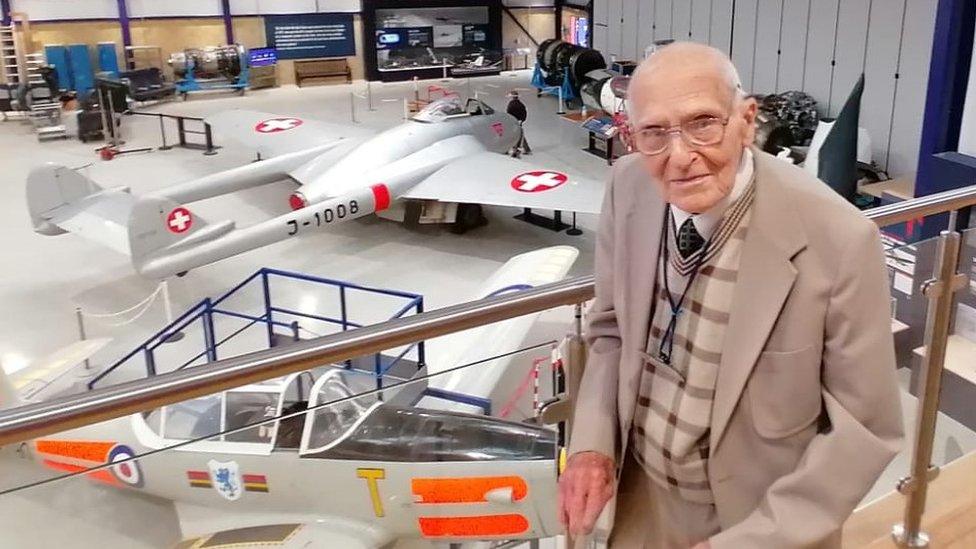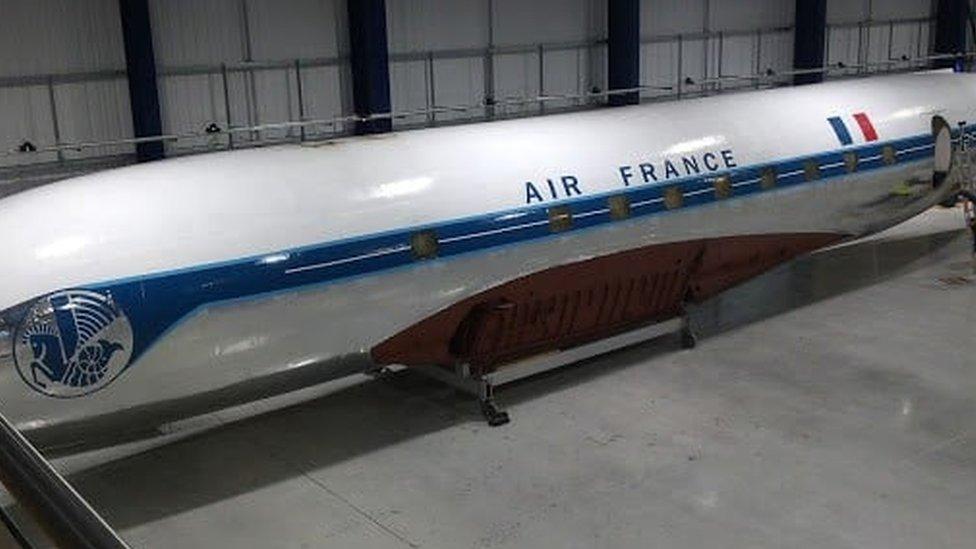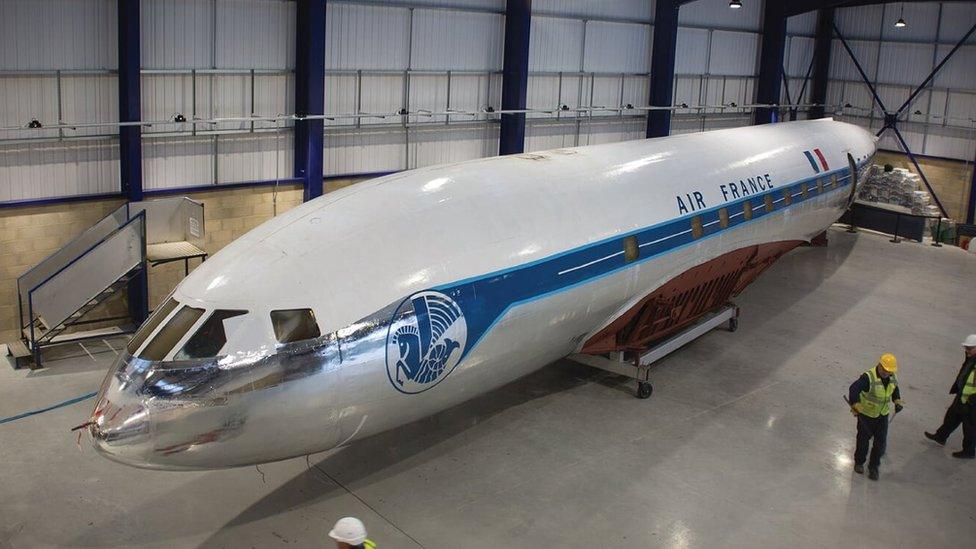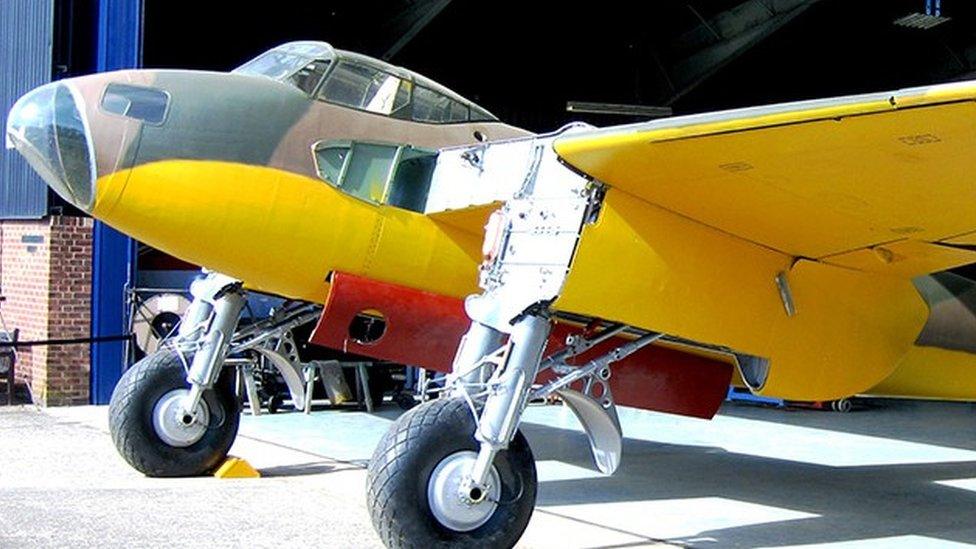Volunteer's bid to save de Havilland Aircraft Museum for 100th birthday
- Published

Ron Green, born in the same year that the De Havilland Aircraft Company was founded, says it was a very special company
A World War Two veteran who only became a volunteer at 95 is celebrating his 100th birthday by raising money for the museum which took him on.
Ron Green began helping at the de Havilland Aircraft Museum, external in Hertfordshire in 2015 after other places felt he might be a "liability".
To thank them, he is attempting to save the museum, whose staff may lose their jobs due to the Covid-19 pandemic.
"This would be devastating for [its] future," Mr Green said.
"I do hope [people] will consider contributing as a way of celebrating my 100th birthday and to preserve the de Havilland heritage for future generations."
The independent museum at London Colney was the first aviation museum in Britain when it opened in May 1959 at Salisbury Hall, the home of the de Havilland Mosquito, a combat aircraft, introduced during World War Two.

The museum's first exhibit was the Mosquito prototype W4050 - pictured before its restoration was completed - which took five years to refurbish
It relies on visitors for funds and faces an uncertain future due to enforced lockdown closures, with its small number of permanent staff at risk of losing their jobs.
Ron Green, who lives in London Colney and turns 100 on 14 November, spent six years in the Royal Air Force between 1939 and 1945, where he qualified as a pilot.
When his wife Kath passed away in February 2015, he felt at a "bit of a loose end" and approached organisations about volunteering but they were "less than enthusiastic", he said.
"Unfortunately they didn't think very much of me, I was 95 at the time and they thought it would cost them a lot in insurance as I might fall over or something."
He approached the aircraft museum, wondering if his wartime experience might be useful, and they immediately took him on.
"It had made me feel rather vulnerable thinking I might be a liability," he said.
"And when I first went to the museum I was thinking that I could be... but I soon found out it was the opposite, that they needed people who understood what had gone on.
"Talking to people has altered my life completely because I'd not had a lot of contact with people outside [recently]."
Museum marketing director Mike Nevin said: "I just knew that he would love being at the museum and become a star volunteer.
"Ron attends the museum regularly, when not locked down, engaging with our visitors who are enthralled by his knowledge and stories."


The museum's exhibits include the fuselage of a DH106 Comet, built at nearby Hatfield in 1953
De Havilland Aircraft Company
Geoffrey de Havilland formed the de Havilland Aircraft Company on 15 September 1920.
Its DH.82 Tiger Moth became the standard RAF elementary trainer during World War Two.
The Mosquito, the unarmed wooden bomber built and designed at Salisbury Hall, was 20mph faster than the Spitfire.
The de Havilland DH.106 Comet, the world's first commercial jet liner, was first flown in 1949.
In 1956, de Havilland formed a consortium with Hunting and Fairey to produce the DH.121, later known as the Trident, the first second generation airliner.
At the end of 1959, the company became part of Hawker Siddeley Aviation.
This became British Aerospace, which was formed when the industry was nationalised in March 1977.
Source: The de Havilland Aircraft Museum

Find BBC News: East of England on Facebook, external, Instagram, external and Twitter, external. If you have a story suggestion email eastofenglandnews@bbc.co.uk, external
- Published5 April 2020

- Published16 February 2020

- Published25 November 2015
